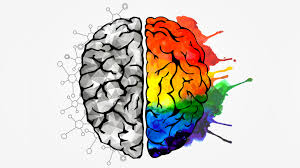Unleashing Your Creative Potential: A Journey of Innovation and Imagination
The Power of Creativity
Creativity is a force that drives innovation, ignites imagination, and shapes the world around us. It is the ability to think outside the box, to see possibilities where others see limitations, and to transform ideas into reality.
At its core, creativity is about breaking free from conventional thinking and embracing a spirit of exploration and experimentation. It is about challenging norms, pushing boundaries, and daring to dream big.
Whether expressed through art, design, technology, or any other form of expression, creativity has the power to inspire, provoke thought, and evoke emotion. It is a universal language that transcends cultural barriers and connects us on a deeper level.
Creativity thrives in environments that encourage curiosity, collaboration, and risk-taking. It flourishes when individuals are given the freedom to explore their ideas without fear of judgment or failure.
By nurturing our creative instincts and embracing new perspectives, we can unlock our full potential and make a meaningful impact on the world. Let us celebrate the power of creativity in all its forms and continue to push the boundaries of what is possible.
Exploring Creativity: Understanding Its Importance, Development, and Impact Across Industries
- What is creativity and why is it important?
- How can I enhance my creative thinking skills?
- What are some examples of famous creative works?
- Is creativity an innate trait or can it be developed?
- How does creativity contribute to problem-solving?
- What role does creativity play in various industries?
What is creativity and why is it important?
Creativity is the ability to think innovatively, to generate original ideas, and to approach challenges with a fresh perspective. It plays a crucial role in driving progress, sparking innovation, and solving complex problems across various fields. Creativity is important because it fuels imagination, fosters individuality, and encourages out-of-the-box thinking. It empowers individuals to express themselves uniquely, to adapt to changing circumstances creatively, and to inspire others with their vision and ingenuity. Ultimately, creativity is a catalyst for growth, transformation, and positive change in both personal and professional realms.
How can I enhance my creative thinking skills?
To enhance your creative thinking skills, it is essential to cultivate a mindset of openness and curiosity. Engage in activities that stimulate your imagination, such as brainstorming sessions, exploring new hobbies, or exposing yourself to different perspectives. Embrace experimentation and be willing to take risks in your creative pursuits. Collaborating with others can also offer fresh insights and inspire innovative ideas. Remember that creativity is a skill that can be developed over time through practice and persistence, so continue to challenge yourself and push the boundaries of your creativity.
What are some examples of famous creative works?
There are countless examples of famous creative works that have left a lasting impact on society and culture. From Leonardo da Vinci’s iconic painting, the Mona Lisa, to Shakespeare’s timeless plays like Romeo and Juliet, creativity has given birth to masterpieces that stand the test of time. In the world of music, we have Beethoven’s Symphony No. 9 and The Beatles’ groundbreaking album, Sgt. Pepper’s Lonely Hearts Club Band. In literature, we find the imaginative worlds of J.R.R. Tolkien’s The Lord of the Rings and the thought-provoking novels of George Orwell, such as 1984. These are just a few examples of how creativity has shaped our world and continues to inspire generations to come.
Is creativity an innate trait or can it be developed?
The question of whether creativity is an innate trait or can be developed is a topic that sparks much debate among scholars and creatives alike. Some believe that creativity is a natural talent that some individuals are born with, while others argue that it can be nurtured and cultivated through practice and exploration. While there may be inherent predispositions towards creative thinking, many experts agree that everyone has the potential to enhance their creative abilities through exposure to new experiences, learning from failures, and honing their skills over time. Ultimately, the balance between innate talent and learned skills in fostering creativity remains a fascinating area of study that continues to inspire individuals to push the boundaries of their imagination.
How does creativity contribute to problem-solving?
Creativity plays a crucial role in problem-solving by offering fresh perspectives, innovative ideas, and unconventional approaches to challenges. When faced with complex problems, creative thinking allows individuals to break free from traditional solutions and explore new possibilities. By tapping into their imagination and ingenuity, people can devise unique strategies, think outside the box, and come up with inventive solutions that may not have been considered before. Creativity encourages flexibility, adaptability, and out-of-the-box thinking, enabling individuals to tackle problems from different angles and ultimately find effective resolutions.
What role does creativity play in various industries?
Creativity plays a pivotal role in various industries, serving as a catalyst for innovation, problem-solving, and differentiation. In the fields of design and marketing, creativity is essential for capturing audience attention and creating memorable brand experiences. In technology and engineering, creative thinking drives breakthrough inventions and solutions to complex challenges. Even in more traditional sectors like healthcare and education, creativity is harnessed to improve patient care, enhance learning outcomes, and foster new approaches to problem-solving. Across all industries, embracing creativity not only sparks fresh ideas but also fosters a competitive edge by setting businesses apart in a rapidly evolving landscape.


